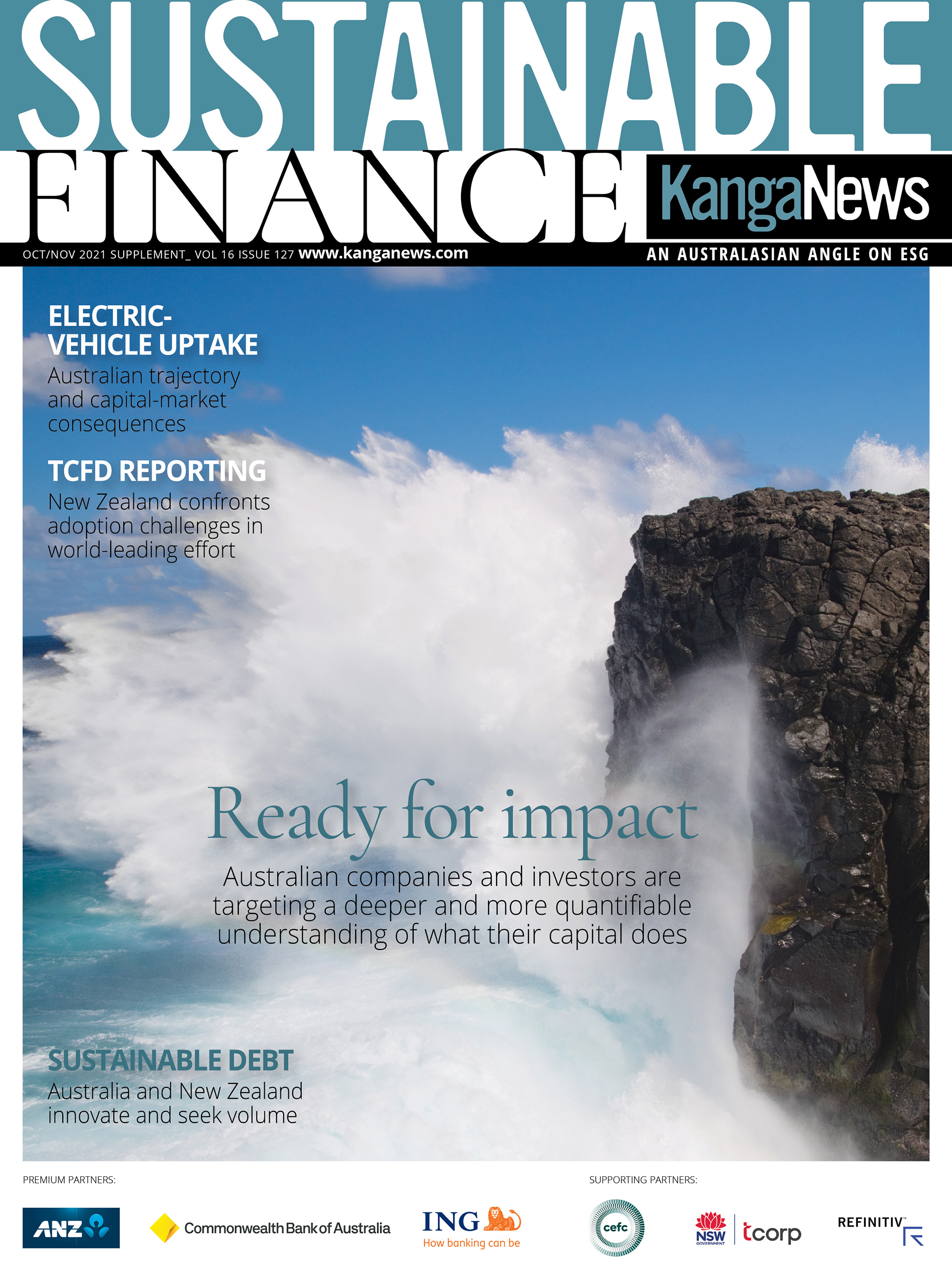
Westpac NZ looking to lead on climate-change finance
Westpac New Zealand (Westpac NZ) became the first New Zealand-based financial institution to issue a green bond on 18 June, with a €500 million (US$563.3 million) deal. The issuer says it wants to be a leader in the space and demonstrate the viability of the funding source to the local market.
The deal, which was issued via Westpac NZ’s London branch, was led by DZ Bank, HSBC, J.P. Morgan and Westpac Banking Corporation New Zealand Branch (Westpac). Jim Reardon, Auckland-based treasurer at Westpac NZ, says it took more than six months to put the necessary green-bond framework in place. The framework was finalised in May.
It helped that the parent bank in Australia already had a green-bond framework, he adds, but given Westpac NZ is a separate entity in a separate jurisdiction, it was appropriate to develop its own framework and identify assets from its own balance sheet which could be used for a green bond.
Sixty per cent of the assets in Westpac NZ’s green bond-eligible pool are green commercial building assets, while the remaining 40 per cent are renewable-energy assets.
Westpac NZ has a target to lend NZ$2 billion by 2020 to support climate-change solutions. Mat Carter, director, debt capital markets and syndicate at Westpac in Auckland, says the green-bond framework and transaction gives further impetus to achieve this.
NZ Inc
Reardon says the primary motivation was as a proof of concept for Westpac NZ’s commitments on funding climate-change solutions. New Zealand has a reputation for being a relatively green economy, but until recently funding through green, social and sustainability (GSS) bonds had not proliferated among borrowers as it has in other markets.
Momentum has gathered in 2019 though, with GSS bonds from African Development Bank, Contact Energy, Argosy Property and Housing New Zealand.
Westpac NZ’s euro bond is the first from a New Zealand borrower in an offshore jurisdiction. The issuer and lead manager say that New Zealand’s reputation as a relatively green economy was not necessarily a marketing point for the transaction, but it did help start conversations. In turn, they hope that the transaction will spur more GSS transactions from New Zealand-domiciled issuers.
“The transaction was a real coup and sets the platform for ‘NZ Inc’ ESG [environmental, social and governance] offshore issuance going forward,” says Carter.
Westpac NZ wants to fund more entities within New Zealand that are focused on tackling issues relating to climate change and Reardon suggests this transaction is important to achieve this. “We can go to the corporate market in New Zealand, particularly institutions that are providing solutions to climate-change problems, and say we can fund this in the wholesale market. We want to be the bank of choice for climate-change solutions in New Zealand.”
The euro market is the deepest green-bond market and often brings the benefit of investor diversity, and demand which can support a pricing outcome tighter than an issuer’s vanilla curve. Carter says the deal brought further diversification to Westpac NZ’s existing euro investor base, with a material number of new ESG-focused investors coming into the book. There was a total of 88 investors in the deal.
Distribution statistics show the deal was allocated mostly to investors in Europe, though with healthy support from Asia (see chart 1). Bank balance sheets and real-money investors were the primary participants by investor type (see chart 2).

Source: Westpac Banking Corporation New Zealand Branch 21 June 2019

Source: Westpac Banking Corporation New Zealand Branch 21 June 2019
The deal was marketed with initial price thoughts of high-60s basis points over mid-swap, before launching with a guidance range of 55-60 basis points and pricing at the bottom end. The final book was more than €1.1 billion, excluding joint-lead-manager interest.
There is scepticism as to whether the green element contributed to a price tighter than a vanilla deal. However, Carter says: “The euro green-bond market is structurally undersupplied, and this was an inaugural green-bond transaction from an established borrower. The resulting demand was significant, with the green format likely a factor in achieving a final pricing outcome tighter than recent vanilla issuance from other New Zealand issuers – albeit at a slightly different tenor.”

WOMEN IN CAPITAL MARKETS Yearbook 2021
KangaNews's annual yearbook amplifying female voices in the Australian capital market.

KANGANEWS SUSTAINABLE FINANCE H2 2021
KangaNews is proud to share cutting-edge information from the global and Australasian sustainable debt market.














